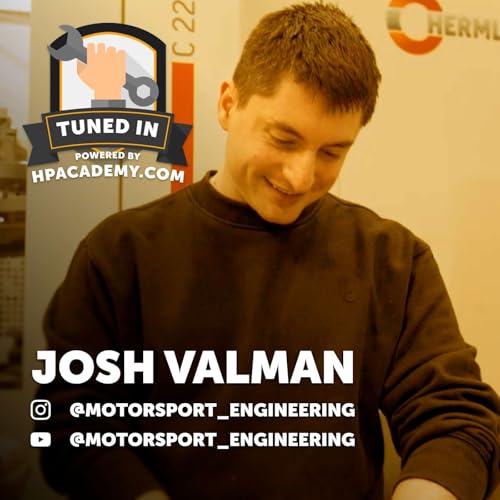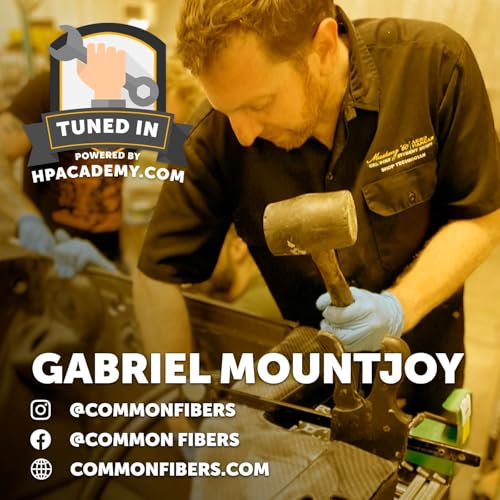CAN communication might seem like a secret, nerdy language spoken only by electronic components —and, in a way, it is. But behind that digital chatter lies the key to unlocking integration between different electrical systems.
Mitch Minton from Minton Performance joins us to unpack CAN communication—how it really works, and why it’s become such a crucial part of the aftermarket performance world.
👉 Use the code ‘PODCAST500’ to get $500 OFF HPA's VIP Package: https://hpcdmy.co/podvip
In this episode of Tuned In, Mitch shares his journey from a casual interest in cars, sparked by ‘The Fast and the Furious’, to becoming a skilled automotive technician and data analyst. He reflects on the evolution of his expertise and his experiences in race engineering and mobile diagnostics.
We then dive into the fascinating world of CAN communication, exploring its vital role in modern automotive systems. Mitch breaks down the complexities of CAN protocol, explaining data transmission, how to decode negative values, and the purpose of his CAN gateway.
We explore the challenges of integrating aftermarket ECUs and how intricate modern vehicle data networks have become. Mitch explains why continuous learning in this field is essential for anyone serious about automotive technology.
With modern vehicles packed full of electronic modules, traditional engine swaps, gearbox conversions, and standalone ECU upgrades aren’t as straightforward as they once were. Without the understanding and use of CAN communication a lot of these modifications are no longer possible.
👉 Use the code ‘PODCAST500’ to get $500 OFF HPA's VIP Package: https://hpcdmy.co/podvip
Follow Mitch here:
WWW: mintonperformance.com
Youtube: @mintonperformance
Facebook: Mitch Minton
Timestamps:
0:00 Cracking the CAN Code: Mastering Integration in Performance Builds
4:37 How did you get interested in cars?
9:11 At what point did you decide to go down the IT road?
12:45 What is your work history and where are you today?
14:54 Can you tell us which HPA courses you took and how you found them?
19:34 What sort of race engineering and data analysis did you get involved in?29:40 How easy is it to understand and use different data loggers?
34:34 Why did you stop doing data analysis?
36:16 What does your current working role look like?
38:33 What is CAN?
45:30 How do the CAN high and CAN low wires work?
47:25 Is there a limit of nodes depending on the Bus length?
48:33 What is the benefit of using CAN Bus?
54:12 What does a CAN message look like?
1:03:29 Why can’t we send the data in the numbers we want to see?
1:05:04 What hardware and software do we need to reverse engineer a CAN Bus? 1:14:10 What is a CAN gateway?
1:19:20 How do we run a modern DCT gearbox on a standalone that doesn’t accurately log torque output?
1:23:09 How do you actually control and program the CAN gateway?
1:24:55 Could you offer a standard and a pro version for different users?
1:28:21 What is CAN 2.0 and what is CAN FD?
1:31:57 Where do you place the data in addresses of importance?
1:33:43 How mainstream is CAN FD at the moment?
1:35:20 What is FlexRay?
1:37:50 Is it going to get harder and harder to make stand alone ECU’s work on late model vehicles?
1:45:08 Final 3 questions
 1 hr and 57 mins
1 hr and 57 mins 1 hr and 53 mins
1 hr and 53 mins Oct 8 20251 hr and 54 mins
Oct 8 20251 hr and 54 mins Sep 24 20251 hr and 35 mins
Sep 24 20251 hr and 35 mins 1 hr and 46 mins
1 hr and 46 mins Aug 27 20251 hr and 56 mins
Aug 27 20251 hr and 56 mins Aug 13 20251 hr and 38 mins
Aug 13 20251 hr and 38 mins 2 hrs
2 hrs

